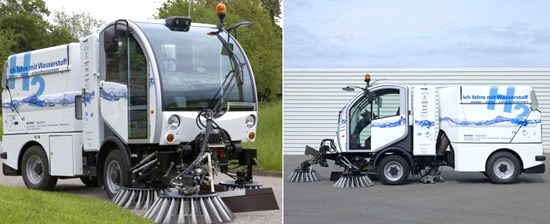
“Bucher CityCat hydrogen” is the world’s first municipal street cleaning vehicle powered by fuel cell technology. The vehicle was developed by Empa and Paul Scherrer Institute (PSI) in partnership with Schörling Bucher, Proton Motor, BRUSA Electronics AG Switzerland. On 14th May 2009, the vehicle was presented to the public in Basel and in the next 18 months it will be used for day to day operations.
The advantages of Hydrogen powered vehicles are that the technology is clean. Moreover, the energy used by fuel cell is reduced to half when compared to other conventional diesel engines. This helps to reduce the carbon dioxide emission by 40%. Secondly, no toxic material is released into the atmosphere except water vapors produced during the chemical reaction between hydrogen and oxygen in the fuel cell.
The hydrogen powered vehicle has opened doors for the other vehicles to come up. Project Leader Christian Bach, Head of Empa’s Internal Combustion Engines Laboratory, is aiming to take the technology from laboratory in the streets. “Hydrogen-driven municipal vehicle” project will help to examine the acceptance of hydrogen technology, market introduction and how much cost effective the vehicle is.
In spite of the opportunities set by the Bucher CityCat hydrogen vehicle, there are certain evils attach to it. “The hydrogen vehicle is the vehicle of the future. But it’s 15 years from now”, said by Ed Markey Detroit. Let’s see the challenges faced by the hydrogen powered vehicle:
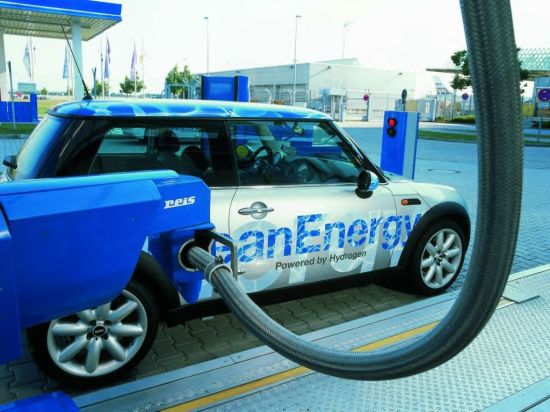
• Government funding: In order to promote the hydrogen powered vehicle, government funding is the first challenge the carmakers are facing. Recently, the Obama Administration has cut the funds for hydrogen car projects, preferring to focus on energy saving measures. This was one of the George Bush Hydrogen Fuel Initiative program to provide $1.2 billion project fund to hydrogen car infrastructure and technology.
• High cost: The fuel cell technology is expensive to use and the questions are unanswered about fuel cell durability, reliability and performance in various conditions.
• Fuel stations and storage problem: According to America’s Department of Energy (DoE), very few fuel stations exist, only few dozen hydrogen stations are there in the US. Hydrogen is difficult to store in tanker trucks, rail cars and other equipments conventionally used to distribute liquid fuels. In order to supply hydrogen effectively, we have to rethink and take steps to store hydrogen efficiently with new expensive infrastructure.
Hydrogen car: A reality
How much more investments are needed to make hydrogen cars a reality? According to a recent study by Oak Ridge national Laboratory, sponsored by DOE, public funding of $10 million will be required to get 2 million hydrogen powered cars on roads in America by 2015, increasing to $45 billion for 10 million cars. In addition to this, $ 55 billion funds will be required from the government to produce 2 million cars on road by 2023.
Applications
• Hydrogen powered trucks: A fuel cell is capable of developing 500 horsepower and will helps to increase the overall efficiency from 35% to 45%.
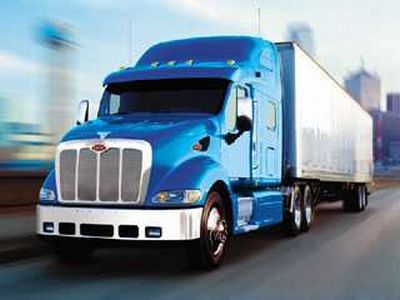
• Hydrogen powered airplanes: Aviation industry uses hydrogen to power their airplanes in order to reduce their carbon emissions which attribute to global warming. A310 Airbus is powered by hydrogen.
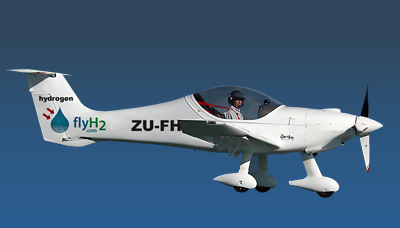
• Hydrogen powered rockets: The second stage of Saturn 5 rocket took 3 men to moon used liquid hydrogen.
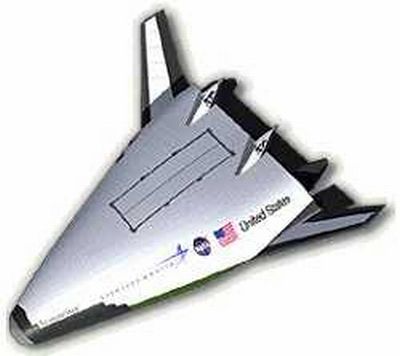
The future of hydrogen powered vehicles at present is dark. It will take another 3 years or more for the cars to be properly established. Let’s see in future how many vehicles are on road and how much successful they are.
Via: ScienceDaily

